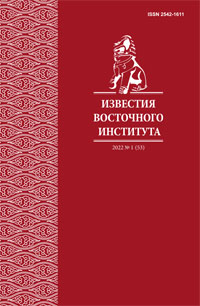Kamakura Sculpture in Temples and Museums
DOI:
https://doi.org/10.24866/2542-1611/2022-1/38-47Keywords:
sculpture, temple, museum, exhibition space, exhibitionAbstract
Sculptural portraits of Japanese patriarchs and historical figures created in the Kamakura era are carefully preserved in Buddhist temples, and are periodically displayed both in national museums and in foreign galleries. In this period have changed religiously-philosophical, ethical and aesthetic values. The range of depicted images expanded due to new historical figures who devoted themselves to public service. The Kamakura Period was marked by new innovations in sculpture. This article gives an idea not only about the ways of development of the portrait, but also focuses on the new possibilities of its review in museum exhibitions. Round sculpture requires a detour, and this is easily achieved when it is demonstrated in the exhibition space, where it gets a new sound and is filled with additional meaning. In the museum, the audience's perception is formed, sculptures are transformed into art objects that give aesthetic pleasure. They acquire a secular meaning, but at the same time their connection with the sacred space of temples is lost.




